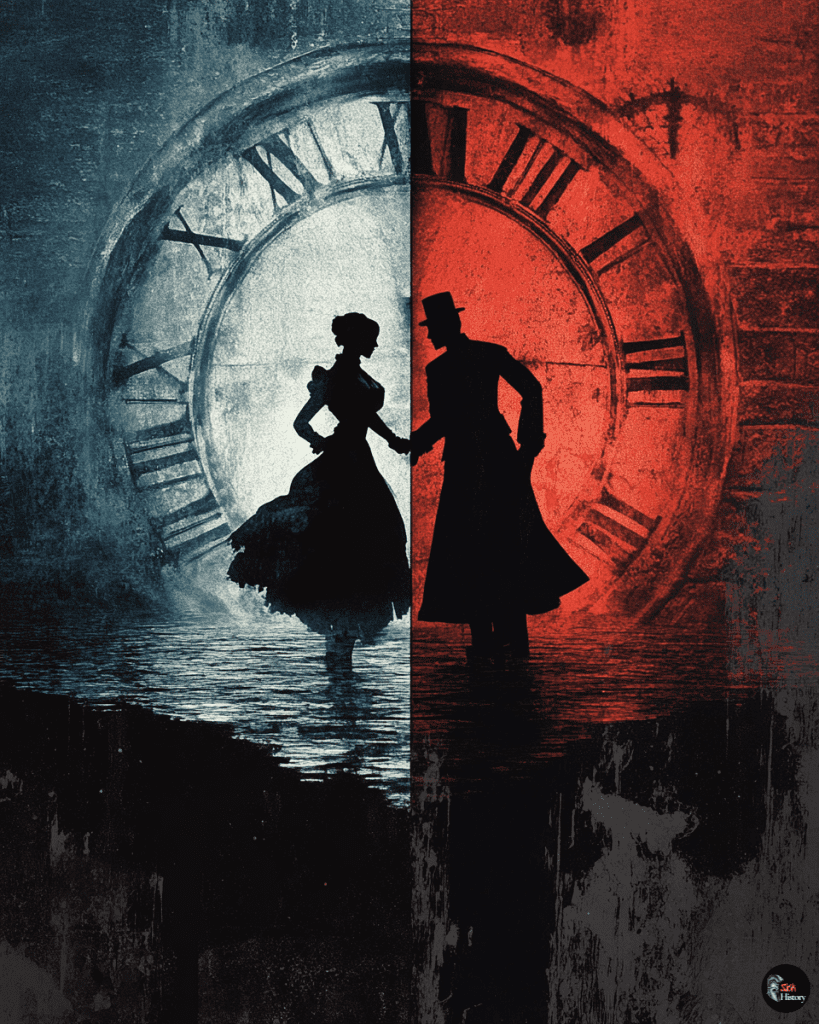In the quiet English suburb of Erdington, Birmingham, two chilling murders occurred 157 years apart, sharing uncanny similarities that have baffled investigators and historians alike.
On May 27, 1817, Mary Ashford was found dead in a water-filled pit, and on the same date in 1974, Barbara Forrest’s body was discovered in Pype Hayes Park.
Both women were 20 years old, had been raped and strangled, and had spent their final hours dancing before their untimely deaths.
The parallels between these two cases extend beyond the surface details.
Both Mary Ashford and Barbara Forrest had expressed feelings of dread about the week to come, eerily foreshadowing their fates.
In each instance, a man named Thornton was implicated – Abraham Thornton in 1817 and Michael Ian Thornton in 1974.
Despite the striking similarities, both cases remain unsolved to this day.
These eerily similar murders have captured the imagination of true crime enthusiasts and historians. They have prompted questions about coincidence, fate, and the nature of criminal investigation across different centuries.
The Erdington murders continue to intrigue and perplex, leaving many to wonder if there’s more to these parallel tragedies than mere happenstance.
The Eerily Similar Erdington Murders
Two unsolved murders in Erdington, Birmingham, separated by 157 years, share uncanny similarities that have captivated historians and true crime enthusiasts alike.
The cases of Mary Ashford and Barbara Forrest, both young women whose lives were tragically cut short, present a chilling parallel that defies rational explanation.
Mary Ashford and The 1817 Tragedy
On May 27, 1817, 20-year-old Mary Ashford’s body was discovered in a water-filled pit near Erdington. She had spent the previous evening dancing at Tyburn House.
Mary’s friend, Hannah Cox, last saw her around midnight.
The prime suspect, Abraham Thornton, claimed he had consensual relations with Ashford. Despite evidence suggesting otherwise, Thornton was acquitted due to a lack of conclusive proof. The case sparked public outrage and legal debates.
Three witnesses reported seeing two sets of footprints near the crime scene, adding to the mystery.
Mary had reportedly expressed a feeling of dread about the week, calling it her “unlucky month.”
Barbara Forrest’s Unsolved Case in 1974
Fast forward to May 27, 1974, exactly 157 years later. Barbara Forrest, also 20, was found raped and strangled near Pype Hayes Park in Erdington. Like Mary, Barbara had been dancing the night before her murder.
Michael Ian Thornton, the prime suspect, was arrested after evidence was found on his clothes. However, he, too, was acquitted due to insufficient evidence.
Barbara had also expressed unease about the coming week, eerily mirroring Mary’s premonition.
The parallels between the two cases are striking: both victims were 20, both murders occurred on May 27, and both suspects shared the surname Thornton.
Pype Hayes Park: A Place of Haunting Coincidences
Pype Hayes Park, the site of Barbara Forrest’s murder, stands as a silent witness to these tragic events. The park’s proximity to both crime scenes adds another layer to the unsettling coincidences.
Both women spent their last hours alive dancing. Their bodies were discovered in similar circumstances, and both cases remain unsolved to this day.
The shared elements of the crimes—the date, the victims’ ages, and the suspects’ surnames—have led many to question whether these are mere coincidences or something more inexplicable.
The park continues to draw curious visitors, its peaceful appearance belying the dark history it conceals.
Investigation and Legal Challenges
The investigations into the murders of Mary Ashford and Barbara Forrest faced significant hurdles, leading to controversial legal outcomes.
Both cases presented challenges in gathering evidence and securing convictions, highlighting the limitations of forensic techniques and legal proceedings of their respective eras.
Abraham Thornton and the 1817 Acquittal
In the case of Mary Ashford’s murder, Abraham Thornton quickly became the prime suspect.
Investigators found two sets of footprints near the crime scene, one belonging to Ashford and the other to a man.
Thornton admitted to being with Ashford on the night of her death but claimed innocence in her murder.
The trial took place at Warwick Assizes. Despite circumstantial evidence, the jury acquitted Thornton after only six minutes of deliberation. This swift decision sparked public outrage.
In an unusual turn of events, Ashford’s brother invoked an ancient right to challenge Thornton to a trial by combat. The court ultimately rejected this plea, and Thornton walked free.
Michael Ian Thornton: A 1974 Trial and Outcome
When Barbara Forrest’s body was discovered in 1974, police quickly zeroed in on Michael Ian Thornton.
Investigators found blood stains on his pants and noted his suspicious behavior around the time of the murder.
The prosecution built a case against Thornton, but faced challenges in definitively linking him to the crime. Three witnesses provided alibis for Thornton, complicating the prosecution’s efforts.
Despite the circumstantial evidence, the jury found Thornton not guilty due to a lack of conclusive proof.
The Quest for Evidence: Struggles and Setbacks
Both cases highlighted the difficulties in gathering and preserving evidence in their respective time periods.
In 1817, forensic science was in its infancy, limiting investigators’ ability to collect and analyze physical evidence from the crime scene.
By 1974, forensic techniques had advanced, but still faced limitations.
The absence of DNA testing, which wouldn’t become widely available until the 1980s, hampered efforts to conclusively link suspects to the crimes.
In both cases, investigators struggled with unreliable witness testimonies and establishing clear timelines.
The lack of modern surveillance technology and communication methods also hindered the ability to track suspects’ movements and verify alibis.

